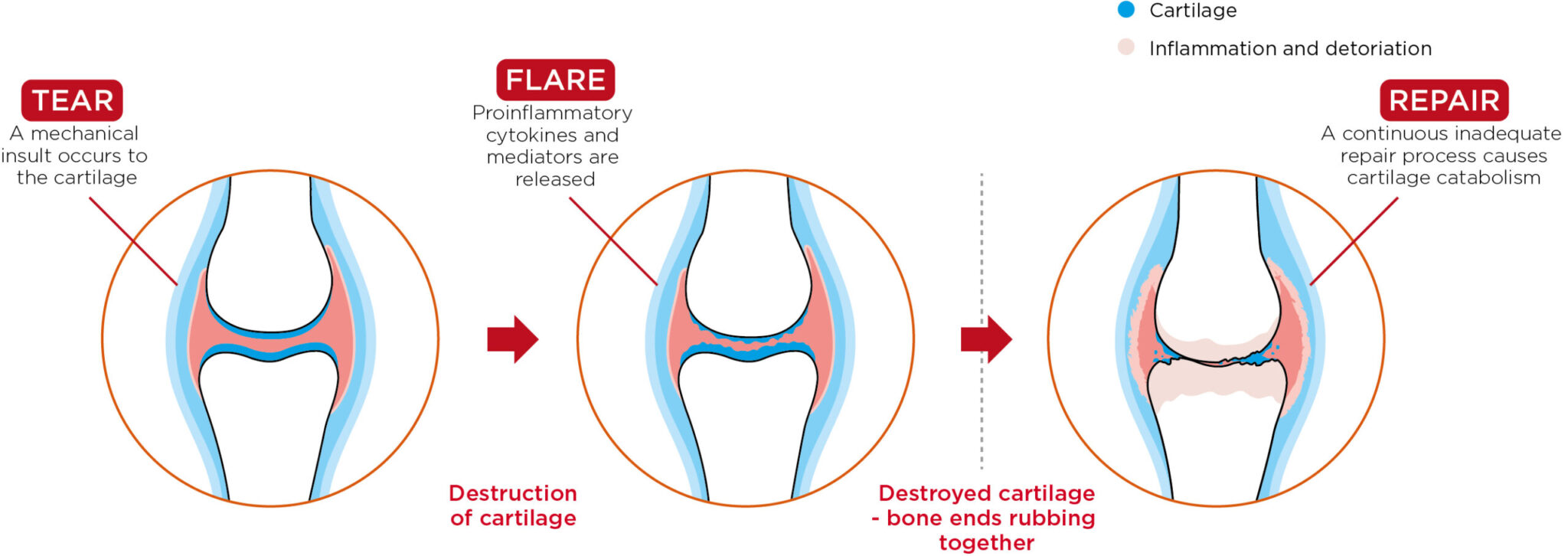The health of our joints is something that can often be taken for granted in our younger years but can come into sharp focus as we age, and aches and pains start to occur.
A healthy joint repair process sees damaged cartilage, which is normal as part of day-to-day life, go through a rebuilding process to enable the joints to continue functioning in a healthy manner.
In healthy joints, a material called cartilage, made up of components such as collagen and proteoglycans, protects each end of the bone, acting as a cushion and providing a smooth movement between connecting bones. This function helps keep us moving comfortably throughout life.
Normally, the body will initiate a process to repair the cartilage and build new collagen to replace the degraded material. While the process is slow, it is an efficient way for the body to repair the joint.
It’s natural though to experience wear and tear as part of this wider cycle of repairing the joints. This wear and tear can occur as a result of general day-to-day use, or it can be accelerated with more intensive use of the joints; working in a very physical job that includes lots of lifting, taking part in sports or activities that put your joints under extra pressure – but needless to say, at some point in our lives, we will ALL experience aches and pains of the joints.
In the UK, Osteoarthritis is the most common condition that causes joint pain and stiffness, with millions seeking treatment each year.

In the case of Osteoarthritis, and as demonstrated by the above image, the repair process is compromised – whether by general wear and tear, intensive wear, or injuries sustained by the joints; leading to a long-term inadequate function of joint repair.
As you can see, when the cartilage in the joints degrades, the ends of the bones, now exposed by the lack of cartilage, begin rubbing together as they meet in the joint capsule, causing pain, stiffness, and inflammation.
While there are a number of conditions that can impact the joints, such as Rheumatoid Arthritis and Gout, the main joint disease experienced by people in the UK is Osteoarthritis, with over 8.5m people having the condition:

Whether you have been diagnosed with a joint health condition, such as Osteoarthritis, you’re just suffering from general aches and pains, or you’re just concerned about the long-term health of your joints – there is positive action that can be taken to maintain the health, strength and flexibility of your joints.
Ensuring that you have a healthy, balanced diet can make a positive difference to the health of your joints. Certain food groups even have natural anti-inflammatory properties, so these are key to look out for when crafting a food plan to aid your joints:

However, whilst the benefits that whole foods provide should not be understated, it can be difficult to consistently hit particular targets with your food choices. As a result, supplementation has become a popular option to try and aid in the daily management of joint health concerns, such as osteoarthritis.
Many popular supplements include high amounts of vitamin C or ingredients such as glucosamine and omega 3 oils as these have benefits associated with the joints. However, the overall effectiveness of these supplements can be brought into question, and there are very few clinical studies linked to even the key ingredients that support their efficacy in supporting joint health.
LithoLexal® Joint Health, containing the proprietary LithoLexal® marine plant extract, Vercilexal®, vitamins C & D and Manganese has been formulated to provide a single solution that is clinically proven to improve symptoms of Osteoarthritis such as pain, stiffness and mobility.
Click below to find out why LithoLexal® is better than the alternatives: